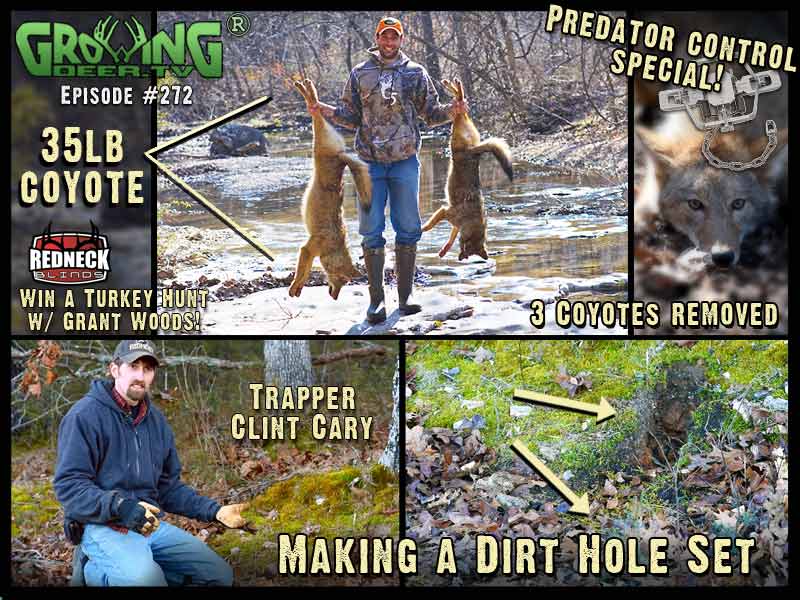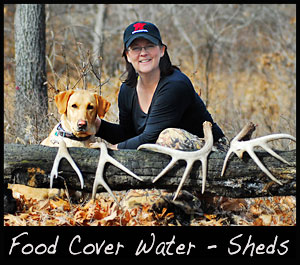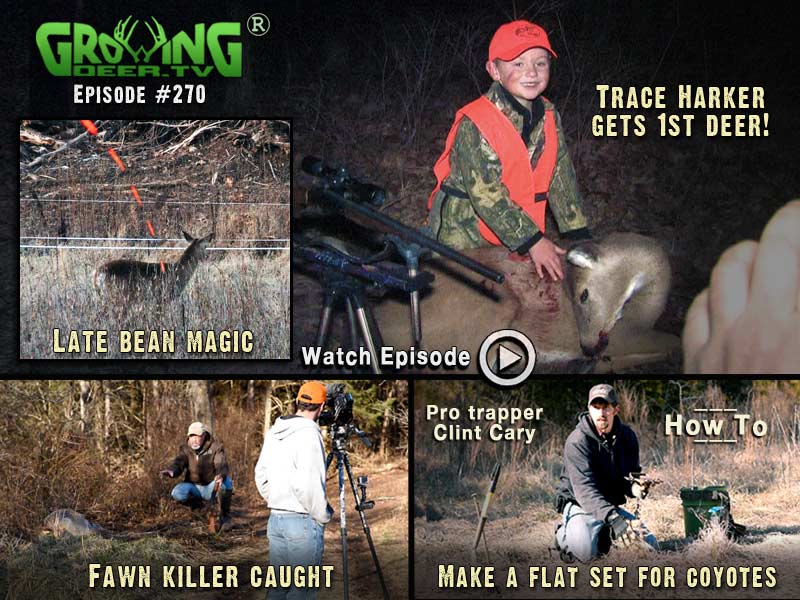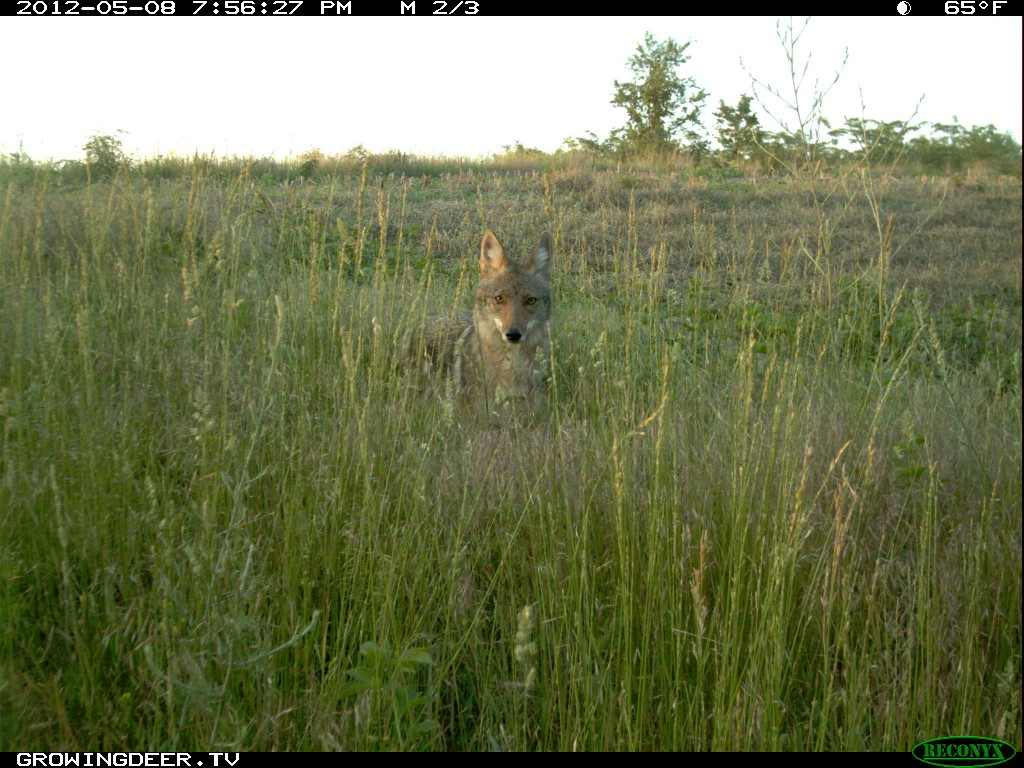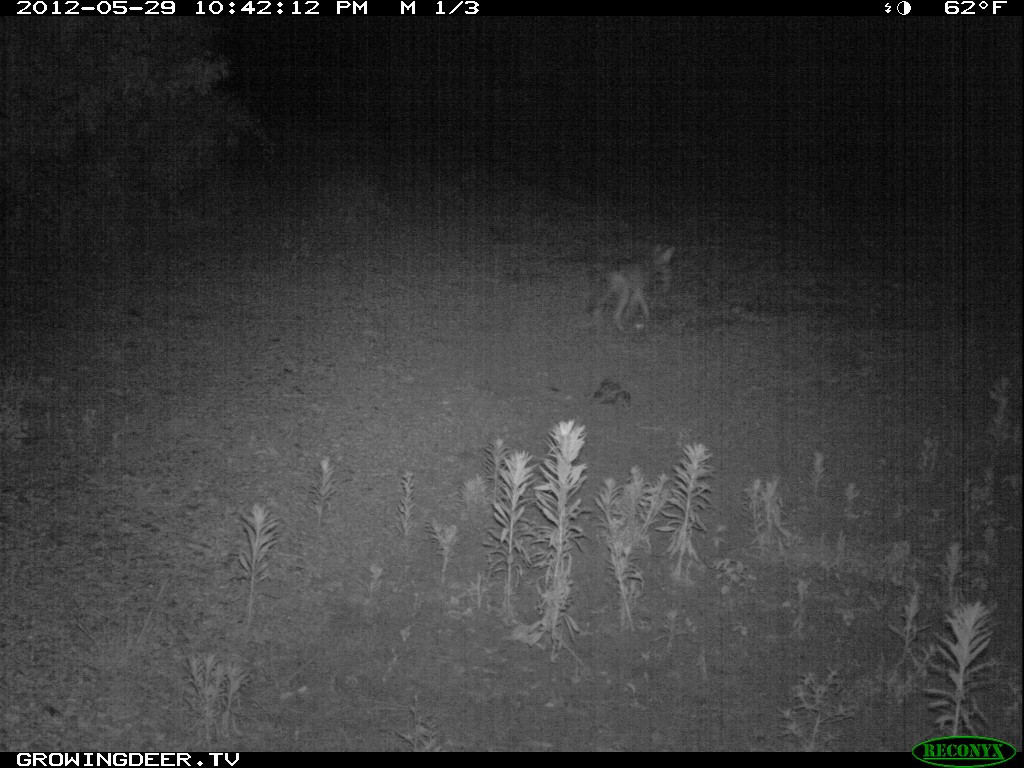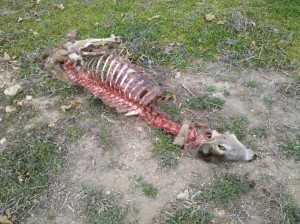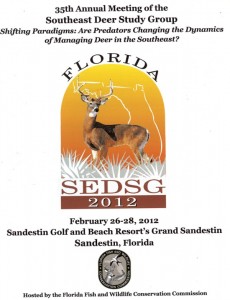Category: Predator Trapping
Fur Prices And The Effect On Predator Removal
Winter is a great time of year for hunters, trappers and outdoor enthusiasts! Temperatures are cool, ticks aren’t active and there are so many outdoor activities to do! One of our favorite things to do during the winter months is set out our Duke traps and remove predators. In Missouri furbearer season is open from November 15 to January 31 and we take full advantage of it. Balancing the predator/prey relationship is an important part of wildlife management on every property.
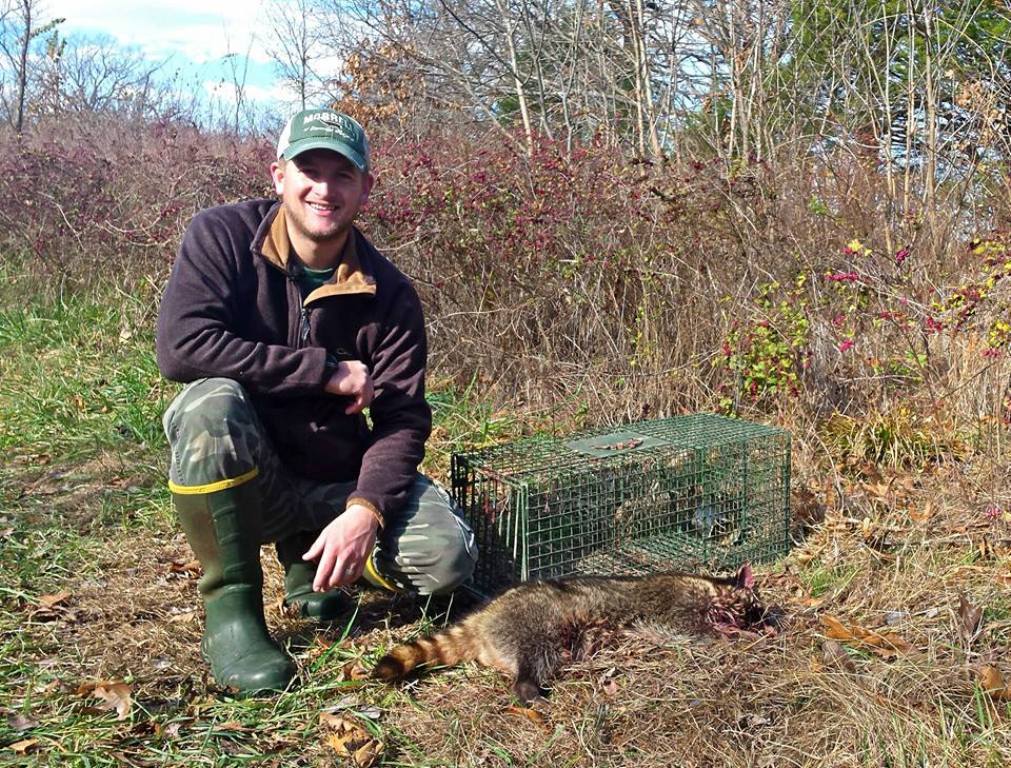
The first raccoon of the year was caught recently in a Duke cage trap.
Fur prices are the lowest they have been in decades. When fur prices drop this low, fur trapper numbers also drop. This means there are fewer people removing predators throughout the whitetails range. Higher numbers of predators means lower numbers of prey species like deer, turkey, and quail. It’s time for wildlife managers and hunters to step up and fill the void left by lower numbers of fur trappers.
One of the easiest ways to remove predators is setting Duke cage traps or DP’s (Dog Proof). These traps are inexpensive but very effective. We set several of these traps throughout the property every trapping season and have tremendous results with removing predators like raccoons and opossums. Trapping is a great outdoors activity during the winter months. It’s not only enjoyable but very rewarding for both the trapper and the prey!
Daydreaming of whitetails,
Adam
Predator Control Special – Episode #272
Want to see more deer and turkeys? Food, cover, and water are key but creating those can result in more predators also. Keeping predators in balance with prey populations is an important management tool! In this episode professional trapper, Clint Cary, will show you how to make a dirt hole set. It’s probably the most popular trapping set! Then, Adam follows up with three caught coyotes.
Tip of the Week:
Everyone loves to find a shed.
Look in bedding areas.
Food sources: Winter food is usually limited, look for sheds in these areas.
Water: Deer gotta drink.
Deer Hunting: First Deer – Episode #270
Remember your first deer? Six year old Trace Harker gets excited this week when he gets his first deer! Then dad, Seth Harker, heads back to a plot of Eagle Seed beans to try his hand at late season success. ‘Tis the season to remove predators off your property. Pro trapper, Clint Cary, shows you step-by-step how to make a flat set to catch fawn-nabbing coyotes.
Tip of the Week:
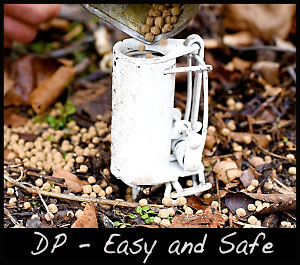
Catching nest predators can be hard.
The Dog Proof trap changed all that. It’s easy and safe to use.
Want more turkey, pheasants and quail? Get some Duke DP’s and get catchin’.
Balancing Nest Predators
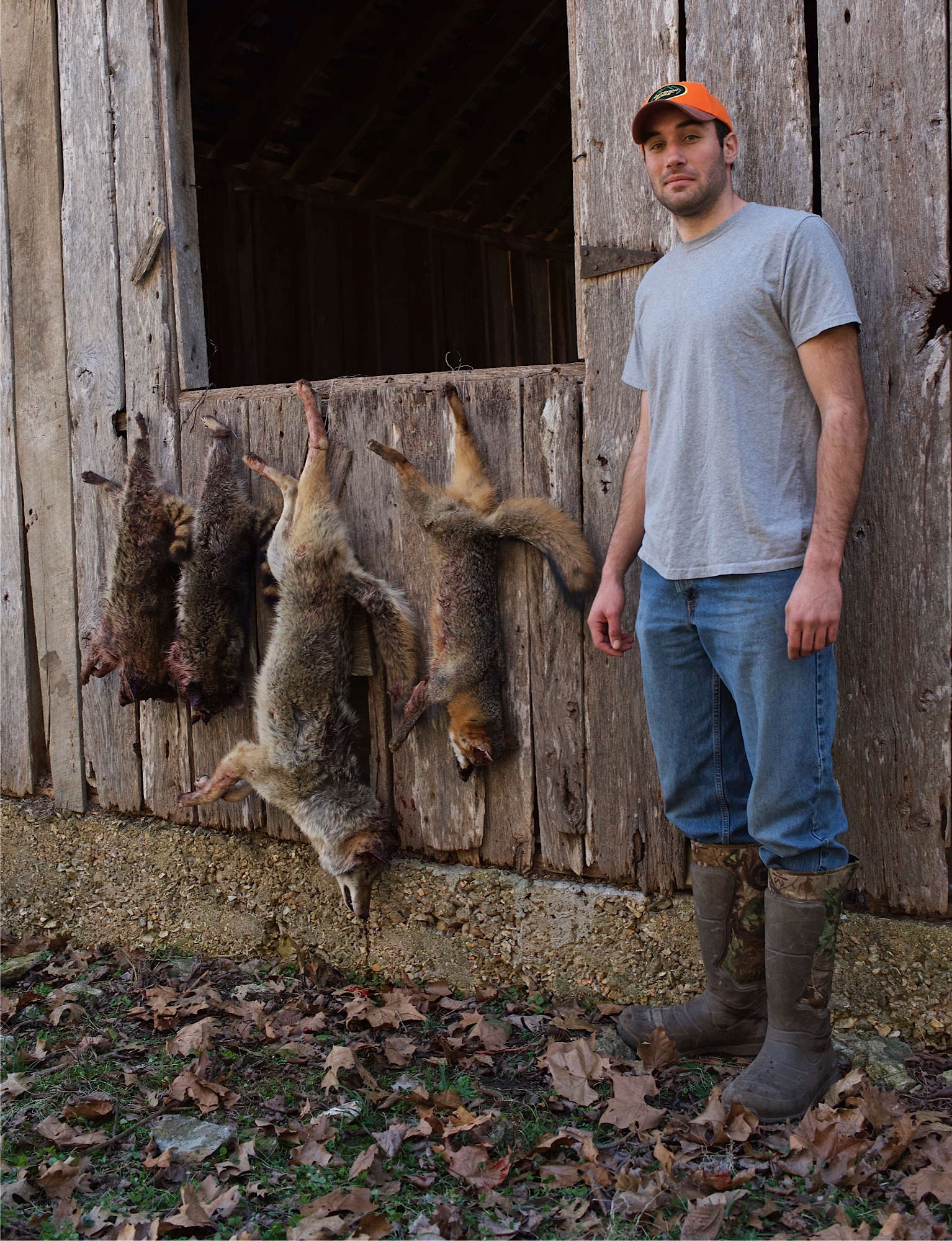
Duke cage traps caught two raccoons and Duke #4’s caught a coyote and fox.
Over the past months, early mornings have been spent in the stand, but now we get to enjoy mornings through another activity, the trap line. As I have checked traps the past few mornings, my blood has raced, hearing the year’s first turkeys begin to gobble. These moments remind me that trapping is a great management tool for turkey and other wildlife.
Last week Adam shared how Duke #4 traps are reducing our larger predators, but we are also removing many smaller predators known as nest predators. Nest predators are animals that feed on the eggs of quail, pheasant, turkey and other species. These predators can do a lot of damage very quickly. Imagine a large raccoon waddling up to a turkey nest finding several delicious eggs sitting there. It’s an easy meal that instantly removes several eggs that may have hatched. As a wildlife manager, I want to do my part to help as many eggs hatch this year, and the trap line can do just that.
We began setting out Duke cage and dog proof traps last month. These traps are easy to set and are very effective for catching smaller predators. We have already removed 32 nest predators from The Proving Grounds. Once removed these predators will be replaced by others, so we trap every year, to continuously help balance nest predator/prey populations. That means each year we have reduced the number of raccoons and opossums from eating turkey eggs that spring.
If you are interested in learning how to begin trapping, to reduce your nest predators, check out GrowingDeer.tv episodes #265 and #266. I hope you get the opportunity to do some trapping or other management projects this week. It will be worth it in the end.
Managing whitetails with you,
Daniel Mallette
Coyote Trapping And Predator Removal
Deer season officially closed for the GrowingDeer Team yesterday. Although we’re a little bummed, we’re dealing with our grief by preparing for next season. It’s never too early to prepare for future seasons, and one way we’re doing that is by removing predators!
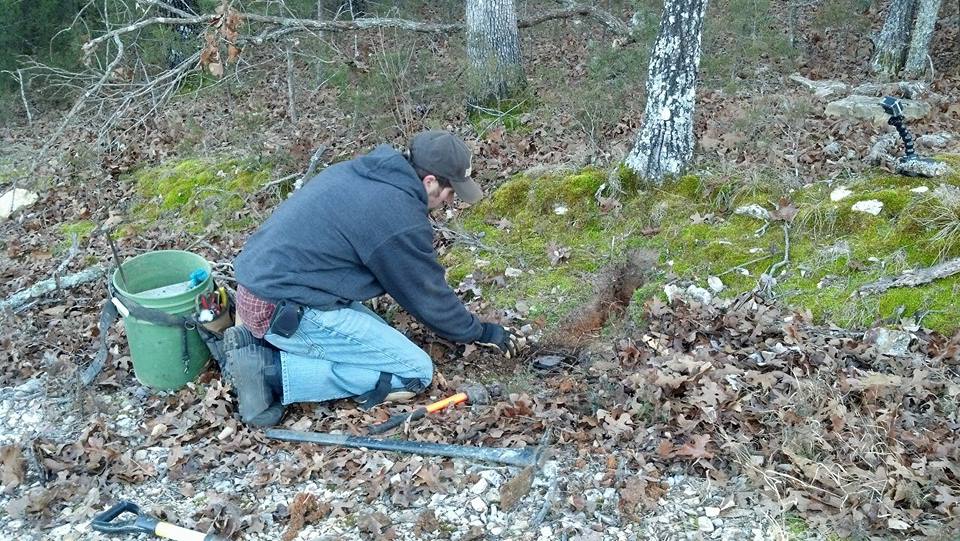
Clint Cary makes a dirt hole set on the side of an interior road. These are great places to set traps for coyotes!
Predator control is a huge piece of our wildlife management program. Coyotes can be very tough on deer herds this time of year. With the whitetail breeding season over, a lot of deer are worn down and weak from the rut and are now dealing with the winter elements. The constant presence of coyotes can raise stress levels on the deer and even lead to death. Injured deer will be easy targets for coyotes to take down as well. All of these factors motivate us to set out our Duke #4 coyote traps!
We use two different styles when trapping coyotes, the dirt hole set and the flat set. These styles of coyote trapping have proven successful for us over the years and we’re hoping they help out our deer herd significantly again this year! To learn more about these techniques watch the upcoming episodes on GrowingDeer.tv!
Being a successful deer manager isn’t putting out a couple food plots every fall. It’s a year round task that includes predator removal! Get out this winter and do your part in balancing the predator/prey relationship!
Daydreaming of Whitetails,
Adam
Hunting Season Now?
It’s June 1st and prime fishing time for many outdoorsmen. Others are busy planting and maintaining food plots and other habitat management activities. However, it’s wide open hunting season for some.
Throughout most of the whitetail’s range fawns have just been born or will be born shortly. Fawns are very vulnerable this time of year during the peak of predation. The research is clear that coyotes and other predators can take a huge toll on fawns and cause substantial stress to adult deer.
Rather than sit by and wish it wasn’t so, why not go predator hunting! This is a great time of year to remove or spook predators from the area where you hunt deer and turkey! The mornings are fairly cool this time of year and many predators are active during the first few hours of daylight.
Predator hunting is a great way to refine your hunting skills! I typically use my deer hunting gear (camo, Nikon scope, Winchester Ballistic Silvertip ammo, etc.). Besides having a good chance of seeing some bachelor groups of bucks, removing predators from your hunting spots may allow the resident bucks to be a bit calmer this fall. When deer are constantly harassed by four-legged predators, they are probably much more alert to two-legged predators as well!
Watching, smelling, or hearing where a coyote killed a prey species is likely very alarming to mature bucks. I see coyote calling this time of year as a win win. This action removes stress from the local deer herd and keeps me and my gear tuned up for deer season!
Do you and your deer herd a favor and grab a FoxPro caller and spend some time being a predator of predators! It’s a win win hunt!
Growing Deer together,
Grant
Pt. 9: Top 10 Recommendations for Managing Land to Yield Mature, Huntable Deer
Part 9: Predator Induced Stress
Last week I shared with you a summary of Dr. John Kilgo’s long-term research about the amount of fawn mortality primarily caused by coyotes to deer in South Carolina. The results were that 70% of the fawns were killed by predators before the first hunting season after they were born. At that rate of mortality, even without any harvest by hunters, deer populations will decrease. This problem is not everywhere yet. However the number of coyotes, bobcats, black bears, cougars/mountain lions, etc., is increasing rapidly in many areas.
Several of my fellow researchers besides Dr. Kilgo have reported similar findings of predator caused mortality on young deer and even adult deer. Predators are a significant factor on deer populations in many areas!
However, direct mortality is only part of the picture. Even healthy adult deer that are not as susceptible to being killed by predators still can suffer because of high predator populations. Great research on elk in Yellowstone National Park has shown that elk that haven’t been killed by wolves are averaging fewer calves per cow, lower body weights, and the males have smaller antlers on average than before wolves were reintroduced. How can this be? Fewer mouths competing for the same or more food should result in more calves per cow, heavier body weights, and larger antler for each age class.
The answer was found by comparing the levels of specific hormones in elk before they were exposed to wolves and then again five years after wolves had been released into Yellowstone. These hormones are produced and released in critters that are stressed. The levels of these hormones were several times higher in the elk after being exposed to wolves!
This is not surprising. The medical news is full of studies reporting how damaging stress is to human health. Dairy, beef, and even poultry farmers attempt to reduce stress in their stock so they will be more productive. The same is true with game animals. Being chased or even living where they need to be constantly vigilant to avoid predators results in increased stress.
Increases in the number of predator populations (increasing coyote, bobcat, bear, hog, etc.) certainly results in increased stress for several species of game animals.
In addition to reduced health caused by predator induced stress, there is another negative to allowing the predator population to increase significantly.
Deer and turkeys that are constantly vigilant against four-legged predators are also constantly vigilant against two-legged predators. It will likely be more difficult to observe game species on properties that have an abundance of coyotes and other predators. I’ve worked on a few properties that had an abundance of predators. We called and trapped to reduce the number of predators and the observation rate of mature whitetail bucks increased within weeks! These bucks didn’t mature into the population. It is doubtful they moved into the population. They simply became less vigilant.
To have more mature bucks to hunt, there must be more fawns recruited into the population. It’s noticeably easier to have encounters with mature bucks when they are less vigilant. Significantly reducing the number of predators will likely have a positive impact on deer herds. Due to increasing predator populations and decreasing numbers of trappers, predator management is rapidly becoming a significant part of deer and turkey management.
Growing Deer together,
Grant
Pt. 8: Top 10 Recommendations for Managing Land to Yield Mature, Huntable Deer
Part 8: Predators
The past seven entries for this blog have been on the subject of managing for and killing mature bucks. However, in recent years just following the play book for passing bucks and providing quality food, cover, and water may not yield the results you desire. Something has changed across much of the landscape.
It’s the number of predators. When I was a boy (I was born in 1961), coyotes were shot on sight by farmers (almost every farmer I knew always had a rifle in his truck). Raccoon pelts were bringing $50.00 +/- and anyone I knew that was any kind of hunter or outdoorsmen trapped and/or hunted raccoons as a source of additional income. Chicken hawks (any large hawk was called a chicken hawk) were also shot on sight. These actions didn’t cause any of these predators to go extinct.
I went off to college and was taught to feel sorry for predators. I was taught that predators were almost never an issue with game species. That might have been true then (although I had a hard time buying into the theory). I was also taught in college that all natural systems are very dynamic – always changing (I certainly have experienced and agree with that!). Whatever the theories and realities were, the current impact of predators on deer, turkey, quail and other game species are real and measureable!
This last statement is not simply my observations. I had a graduate student five years ago study the impacts of coyote and bobcats on fawn recruitment (fawns surviving until hunting season) on a private property in northern Alabama. Briefly summarized, the results were stunning! He monitored fawn recruitment during year one, then had a trapper remove many coyotes and bobcats from the 2,000 acre property during the following fawning season. During the second fawning season there was a 150+% increase in fawns at the same property as result of removing 20+ coyotes and 10 bobcats! It appeared the turkey and rabbit population also exploded!
When Cory VanGilder (the grad student) presented his resultsat the annual Southeast Deer Study Group Meeting, there wasn’t much excitement among the 100’s of scientists in attendance. Fast forward five years, I just returned from the 35th Southeast Deer Study Group Meeting. Just to give you a hint of the change in attitudes among some of my fellow deer biologists, the theme of the meeting this year was Shifting Paradigms: Are Predators Changing the Dynamics of Managing Deer in the Southeast? Twelve of the 35 presentations were on the subject of coyote predation on deer!
Several of the researchers reported results of fawn mortality documented by the use of vaginal transmitters (VITS). This technology allowed researchers to captures does after they’ve been bred and insert a transmitter in their vagina. The VIT is pushed out of the birth canal when the fawn is born and alerts the researchers by changing the frequency/tone of signal. Researchers can often find the birth site and/or fawn within four hours or less after birth.
Dr. John Kilgo, a talented researcher for the Forest Service, has years of such data. He and his staff have documented that in recent years, 70% of the fawns were killed by predators at their research site (a 300 square mile area in South Carolina) during the first few months after birth! 62% of the total mortality was due to coyotes!! This is not a guess or a theory. At this level of predation, even without any hunting mortality, deer populations will decrease rapidly in number and quality (more on the stress of predation next week).
John and his staff swab the kill site and use advanced techniques with genetic testing to confirm if the killer was a coyote, bobcat, domestic dog, etc. Using this technology, they can tell if it was a male or female predator, and if it was the same predator that killed a fawn ¼ mile or 10 miles way. John’s research is fascinating!
He ended his abstract by saying “I predict that this pressure (coyotes) will require significant changes in how deer populations are managed in the Southeast in the future, because coyotes are here to stay.”
I agree with John, but know from my student’s work and my experience that coyotes can be trapped and their impact on deer populations reduced. Trapping and calling coyotes are fun activities (GDTV 119). However, it requires time and effort. There is no easy method to significantly reduce coyote populations. Some managers will simply let their deer herds be significantly reduced by coyotes. I, and hopefully many others, will not sit by and watch deer populations be reduced significantly by predators. I will actively call and trap coyotes to keep their population in check so deer, turkey, and other game species can maintain a healthy population.
I enjoy hearing a coyote howl. However, I enjoy seeing and interacting with deer and turkeys more. When push comes to shove, I’ll be the deer’s best friend and the coyote’s worst enemy. How about you? Will you sit by and watch America’s favorite game species be reduced to the occasional rare sighting? Or will you join me in protecting the future of hunting?
The damage by coyotes and other predators to deer and other game species is not just direct mortality. Predators also can cause much stress to game species! Next week I’ll share more about this issue.
Growing (and protecting) Deer together,
Grant
Predators and Prey
I posted an image on Facebook of Matt, my intern, with a bobcat he’d trapped this week. I was surprised that image resulted in name calling and arguing among readers of that page. Folks were either thrilled with the removal of a predator or offended that someone would trap a predator.
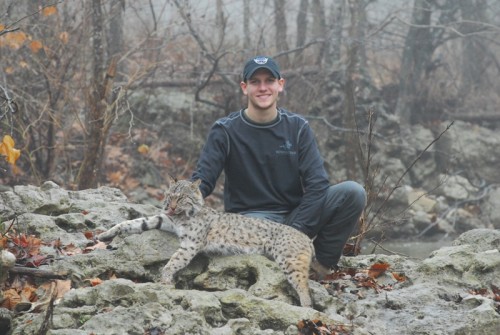
Bobcat that was trapped to help balance predator & prey species.
I trap and call predators for many reasons. I enjoy the challenge of matching skills with a predator. My family and I really like the pelts and we enjoy giving them as gifts. Just as importantly, I wish to attempt to balance the predator/prey relationship on my land so there are plenty of prey (turkey and venison) for my family, our guests, and for the remaining predators to eat.
When I was a younger boy (I’m 50 now), raccoon hides sold for $40+ in my neighborhood and gas was $0.70 per gallon. Now raccoons bring less than $10 in the same area and gas is $3.00 per gallon. We all know the price of fuel, steel, etc., has increased dramatically. There is very little incentive for trappers, except for the love of the work, to remove predators. Predator species have few predators in most areas.
“Balance” is a tough objective to achieve in most aspects of wildlife management. This is because the habitat and populations are always changing. It is a fantasy that wildlife populations or habitat will remain balanced without man’s intervention. Allowing either predator or prey species to build up too high always results in bad results. This has been documented time and time again in species like deer, rabbits, wolves, etc.
However, given that the habitat resources are becoming more and more limited, big swings in population levels don’t recover as easily. I don’t wish for predators – bobcats, opossomus, fox, raccoons, coyotes – to remove most of the prey species -turkey poults, and whitetail fawns – at my farm. I want there to be enough turkey and whitetails for me and the predators. There aren’t many predators of bobcats and coyotes where I live. There certainly aren’t many trappers in my neighborhood. So my efforts to trap some predators will certainly not hurt the coyote or bobcat population in the county.
We tend to actively manage the game species, but have shifted to a protection mindset for predators in some states. On my property, I will work to maintain a reasonable balance between predators and prey. The balance to me means there are plenty of prey (turkey and venison) for my family and the predators to eat. Having just enough prey for only the predators to eat and me shifting to playing ping pong is not an option. I’m going to work to provide good quality habitat which benefits both the predators and prey species, and trap and call to make sure the predators have a predator. Are you managing all the species on your property, or just the prey?
Growing Deer together,
Grant
Peak of Predation
Fawning and nesting season occurs at a great time of year. The temperatures are warming, and most vegetation is at its peak of both production and quality. It is the best time of year for deer, turkey, quail, and other game in many ways. It’s also the toughest time of year for these same species.
Coyotes and other predators are extremely skilled at consuming fawns, eggs, and poults. In fact, in many instances this is the time of year when losses to predation are at the highest. A coyote can kill multiple fawns. Several recent research projects have documented predators consuming 70+% of newborn fawns!! A single raccoon can destroy multiple turkey nests and consume dozens of eggs.
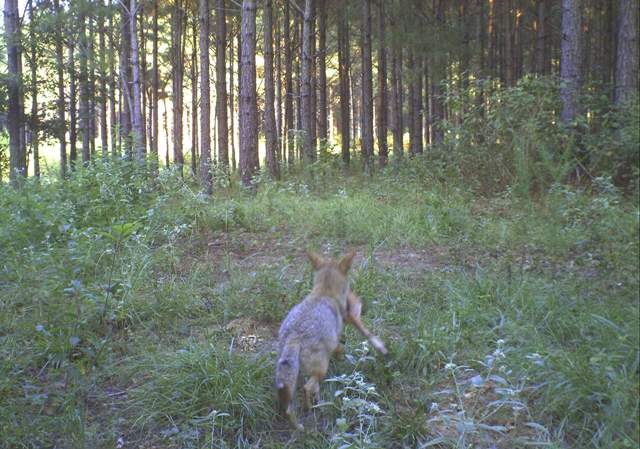
The old theory that as long as ample cover is available, predators are not a problem has been disproven by multiple well-designed research projects. However, hunters and managers should find encouragement in that significant increases (100+%) in fawn and poult survival have been reported in association with predator removal. These huge increases in fawn/poult survival are certainly enough evidence and motivation for me to practice predator control at The Proving Grounds and on my clients’ properties.
Calling coyotes is a great management tool and can be effective during the spring. Calling coyotes is one of the most enjoyable and exciting hunting techniques around. I can’t think of many activities that are better than an enjoyable hunt and knowing that I’m directly helping the local deer and turkey populations. I’ll be calling coyotes this spring so my family and I will continue to have quality hunting opportunities this fall. I hope you will join me in this important and fun wildlife management activity!
Growing Deer together,
Grant



